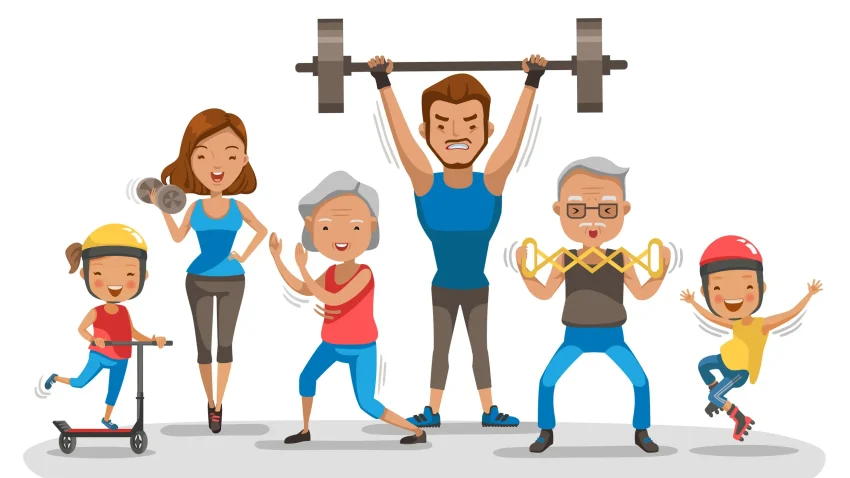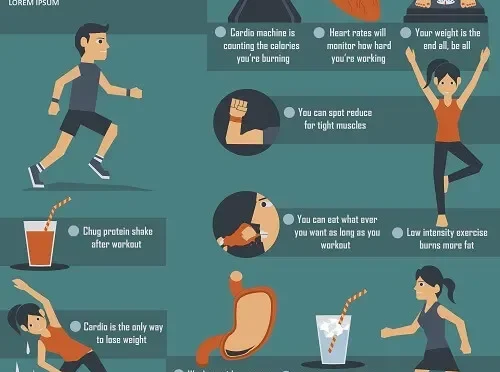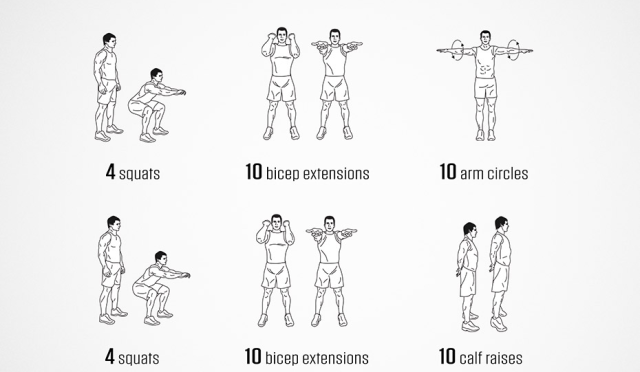Fitness for All Ages: Adapting Your Routine Guide
Fitness for all ages plays a crucial role in creating a healthier society, empowering individuals to engage with physical activity at every stage of life. Whether you’re introducing youth fitness programs, guiding adults in their fitness routines, or promoting fitness for seniors, customized approaches ensure that everyone can benefit from an active lifestyle. As we age, adapting our fitness routine is essential to accommodate changing bodies and needs—this includes cardio, strength training, and flexibility exercises suitable for different life stages. By exploring exercise options that resonate with varying age groups, we can foster a culture of inclusivity and support for all fitness levels. Join us as we delve into the world of fitness, where every age can find joy, health, and resilience through tailored exercise.
When discussing physical wellness, it’s essential to understand that fitness transcends mere exercise—it encompasses movement strategies that cater to the unique requirements of individuals throughout their lives. This includes the adaptation of workout regimens to suit children, teenagers, young adults, and older populations, ensuring that each group enjoys activities that enhance both their physical capabilities and mental well-being. From youth fitness engagement to resilience training for older adults, the principles of health and fitness vary dramatically, yet remain interconnected. Acknowledging the importance of training tailored to specific life stages not only fosters personal growth but also encourages a community-centric approach to well-being. Let’s explore how personalized health strategies can inspire individuals across generations to achieve their fitness goals.
Fitness for Children: The Building Blocks of a Healthy Future
Establishing a sound fitness routine in childhood is crucial, as it serves as the foundation for lifelong health. Children ages 5 to 12 should engage in at least 60 minutes of physical activity daily, incorporating diverse activities like running, swimming, or playing sports. These aerobic exercises not only improve cardiovascular health but also promote social interactions through team sports. By introducing fun and diverse workouts, children are more likely to develop a positive attitude towards exercise, paving the way for them to become active adults.
Moreover, strength-building activities such as climbing and jumping create essential muscle development and bone strengthening. Incorporating games that require physical movement, like tag or obstacle courses, can further engage children’s interest and foster a love for being active. This early introduction to fitness not only helps avoid obesity in youth but also sets the stage for healthy habits that carry into adolescence and adulthood.
Adolescent Fitness: Cultivating Lifelong Habits
Adolescence is a pivotal time for establishing lifelong fitness habits. As teenagers balance social pressures and academic responsibilities, physical activity becomes a vital outlet for stress management. Encouraging participation in various sports or fitness programs can help adolescents build emotional resilience and a strong sense of teamwork. Activities like dance classes or martial arts can serve as both enjoyable and physically demanding outlets, promoting both fitness and self-confidence.
Additionally, as teens transition into adulthood, it’s important to educate them about safe workout techniques to prevent injuries, particularly during strength training. Schools play a significant role by providing comprehensive health education and physical fitness programs that emphasize diversity in workouts, helping youngsters discover what forms of exercise they truly enjoy.
Young Adult Fitness: Navigating Busy Lives
In young adulthood, fitness routines should accommodate increasingly busy schedules. Placing emphasis on time-efficiency, incorporating HIIT (High-Intensity Interval Training) and mixed workouts can help young adults maximize their results in shorter time spans. Such routines combine endurance, strength, flexibility, and balance elements to keep workouts fresh and engaging. By exploring various classes—be it spinning, yoga, or circuit training—young adults can easily find what resonates with them, ensuring adherence to a sustainable workout regimen.
As mental well-being comes into play during these years, incorporating mindfulness components such as meditation or yoga can lead to substantial benefits. Young adults should aim to build community through workout partners or groups, as social support serves to enhance commitment to fitness. It’s crucial to emphasize that exercise is not solely a physical endeavor but a holistic approach to wellness.
Middle Age Fitness: Focusing on Strength and Stability
As individuals reach middle age (ages 40-64), the focus shifts to maintaining muscle mass and bone density, which are crucial for preventing age-related decline. Regular resistance training at least twice a week should become a staple of middle-aged adults’ fitness routines, utilizing free weights, resistance bands, or body-weight exercises. This ensures that strength levels are maintained, reducing the risk of injuries and falls—a primary concern for this age group.
In addition to strength training, incorporating flexibility and core stability exercises is equally important. Activities like yoga and Pilates can significantly benefit individuals in this age bracket by improving their overall balance, posture, and stress release. Prioritizing cardiovascular activities, like brisk walking or cycling, offers additional health benefits, contributing to overall well-being and encouraging a physically active lifestyle.
Fitness for Seniors: Enhancing Quality of Life
For seniors (ages 65 and older), maintaining physical activity is essential in enhancing independence and quality of life. Engaging in both balance and strength-training activities not only reduces fall risks but also promotes mobility. Gentle yet effective exercises such as tai chi or swimming can provide comprehensive benefits without overstressing joints, which is crucial for this population.
The CDC recommends that older adults strive for at least 150 minutes of moderate-intensity aerobic activity weekly, complemented by muscle-strengthening activities on two or more days. Group classes tailored for seniors not only offer structured workouts but also foster social interaction, building a sense of community and encouragement among peers to stay active.
Recent Trends in Fitness: Technology and Personalization
Fitness trends are constantly evolving, especially with rapid advancements in technology. Fitness apps and wearable devices have made it easier than ever for individuals to track their activity levels, set personal goals, and stay motivated. This level of personalization allows users to adjust their fitness routines in real-time, leading to more effective outcomes. Since technology can cater to various fitness levels, it plays a crucial role in ensuring that everyone, from children to seniors, can find appropriate and engaging ways to stay active.
Moreover, the increasing recognition of the link between mental health and physical activity has led to more fitness programs incorporating mindfulness and emotional support strategies. This trend emphasizes the importance of holistic approaches to wellness and reflects a growing understanding that fitness is not just about physical health but overall quality of life.
Integrating Family Fitness: A Holistic Approach
Encouraging family fitness not only promotes health but strengthens familial bonds as well. Activities designed for all ages, such as family walks, hiking trips, or weekend sports, create shared experiences centered around health. Engaging children, teens, and adults in joint fitness activities teaches valuable lesson about team dynamics and healthy lifestyles while making exercise an enjoyable and regular part of family life.
Additionally, integrating fitness into family routines encourages open communication about health and wellness topics. Parents can serve as role models by demonstrating active lifestyles, thus influencing children to adopt healthy habits independently. By fostering an environment where fitness is prioritized family-wide, the groundwork is laid for sustained health across generations.
Community Fitness Programs: Building Connections for Health
Community fitness programs provide accessible avenues for individuals of all ages to engage in physical activities together. Parks and recreation departments often provide classes tailored to various age groups, allowing everyone to find something suitable, from youth fitness programs to senior-specific classes. Participating in these community-led programs fosters social connections and encourages consistent participation while reducing barriers to fitness.
Moreover, these initiatives emphasize inclusivity and diversity, ensuring that fitness is accessible to all, regardless of background or fitness level. By building a supportive community around health and wellness, participation rates can soar, leading to healthier populations and stronger communal ties.
The Future of Fitness: Emerging Trends Across Age Groups
Looking forward, the future of fitness is likely to embrace greater inclusivity and technological enhancement. With a growing emphasis on personalization, fitness programs are expected to adapt not only to individual fitness levels but also to unique life stages, ensuring that everyone from children to seniors can find appropriate activities. Moreover, emerging technologies such as virtual reality workouts or interactive fitness games could redefine how people engage in physical activity.
As the fitness industry continues to evolve, there will likely be a sustained focus on integrating mental health support within fitness programs. The understanding that emotional and physical wellness are intertwined will promote the development of holistic approaches that prioritize fitness for all ages, fostering long-term adherence to healthier lifestyles.
Frequently Asked Questions
What are effective fitness routine adaptations for children aged 5-12?
For children aged 5-12, effective fitness routine adaptations include engaging them in at least 60 minutes of physical activity daily. This can involve aerobic exercises like running and swimming, muscle-strengthening exercises through climbing or sports, and bone-strengthening activities like jumping rope. Incorporating a variety of fun activities helps establish lifelong fitness habits.
How can teenagers develop fitness routines that promote lifelong habits?
Teenagers can develop fitness routines by participating in both aerobic and strength training exercises. Activities such as team sports or dance not only promote cardiovascular health but also foster social interaction. Education on proper techniques and focus on group activities can further support injury prevention and mental well-being.
What adult fitness routines are recommended for individuals aged 20-39?
Adults aged 20-39 should adopt varied fitness routines that include endurance, strength, flexibility, and balance exercises. High-Intensity Interval Training (HIIT) is particularly effective due to its time efficiency. Prioritizing mental well-being through mindfulness and exploring new workouts can also keep routines engaging and beneficial.
What are the key fitness practices for individuals aged 40-64?
For individuals aged 40-64, incorporating strength training exercises at least twice a week is essential to maintain muscle mass. Enhancing core strength and flexibility through yoga or Pilates, along with regular aerobic activities like brisk walking or cycling, helps support overall health during middle age.
How should older adults adapt their fitness routines for safety and effectiveness?
Older adults should focus on balance and strength training to minimize fall risk. Engaging in at least 150 minutes of moderate aerobic activity weekly, along with muscle-strengthening exercises on multiple days, is advisable. Low-impact activities like walking or swimming are also beneficial for joint health.
What are the benefits of youth fitness programs for children?
Youth fitness programs offer numerous benefits, including improved physical health, increased strength and coordination, and the development of social skills through group activities. These programs also help instill lifelong fitness habits and can enhance mental well-being by providing a positive outlet for energy.
What fitness options are particularly suited for seniors aiming to stay active?
Seniors aiming to stay active should consider engaging in low-impact exercises such as walking, water aerobics, or cycling. Balance-enhancing activities like tai chi and strength training with light weights can also be beneficial for maintaining independence and preventing falls.
How can technology enhance fitness for individuals of all ages?
Technology enhances fitness for all ages through fitness apps and wearable devices that track activity levels and progress. These tools enable personalized routine adaptations and provide motivation, accountability, and insights into fitness performance, making workouts more engaging and focused.
Why is mental health an important consideration in fitness for all ages?
Mental health is crucial in fitness for all ages because physical activity has been shown to reduce anxiety, depression, and stress while promoting overall emotional well-being. Incorporating mindfulness practices in fitness routines helps individuals cope with life’s challenges, emphasizing the intertwined nature of physical and mental health.
What recent trends in fitness for all ages should individuals be aware of?
Recent trends in fitness for all ages include the personalization of fitness programs to cater to individual needs and the increasing recognition of mental health within fitness. Incorporating technology and mindfulness practices into workouts has also gained popularity, helping individuals maximize their overall well-being.
| Age Group | Recommended Activities | Key Focus Areas |
|---|---|---|
| Childhood (Ages 5-12) | Aerobic, muscle-strengthening, and bone-strengthening exercises. | Encourage variety and fun to establish lifelong habits. |
| Teenage Years (Ages 13-19) | Aerobic exercises (team sports, dance) and strength training. | Foster a love for fitness, focus on injury prevention and social interaction. |
| Young Adults (Ages 20-39) | Varied workouts including HIIT, yoga, and personal training. | Mental well-being, motivation, and diversity in routines. |
| Middle Age (Ages 40-64) | Resistance training, aerobic activity, yoga, and Pilates. | Maintain muscle mass, flexibility, and overall cardiovascular health. |
| Older Adults (Ages 65 and Older) | Balance and strength training, moderate aerobic activity. | Prevent falls and enhance independence. |
Summary
Fitness for all ages is essential as it promotes physical health and mental well-being throughout one’s life. By adapting routines to meet the specific needs of each age group, individuals can improve their quality of life at every life stage. From playful activities in childhood to maintaining independence in older adulthood, it’s clear that fitness plays a critical role in enhancing overall well-being. Prioritizing personalized fitness routines ensures that everyone, regardless of age, can enjoy the benefits of an active lifestyle. Embrace the journey of fitness at all ages, as it is never too late to start!
#FitnessForAllAges #AdaptedWorkouts #HealthyAging #ExerciseGuide #InclusiveFitness








